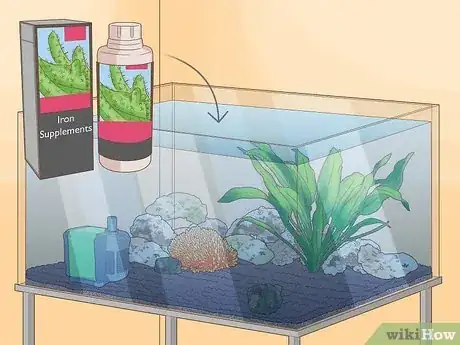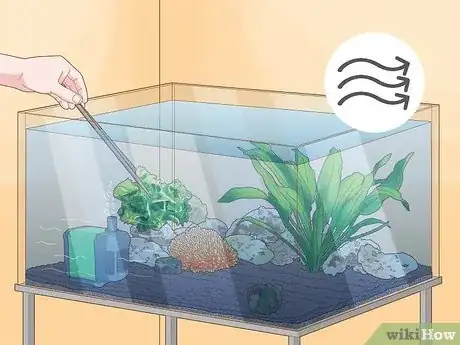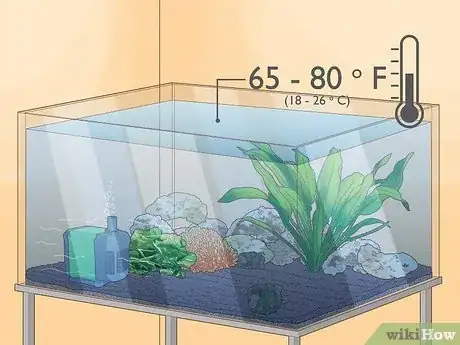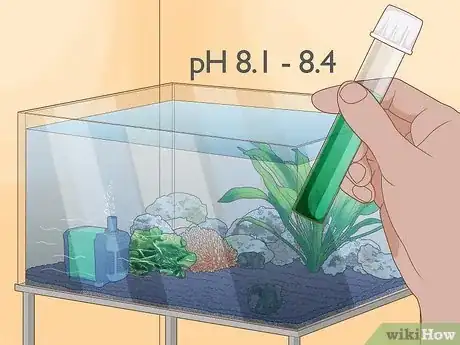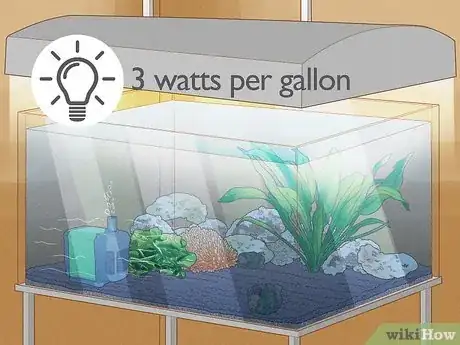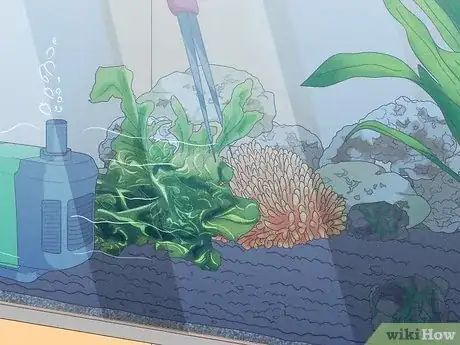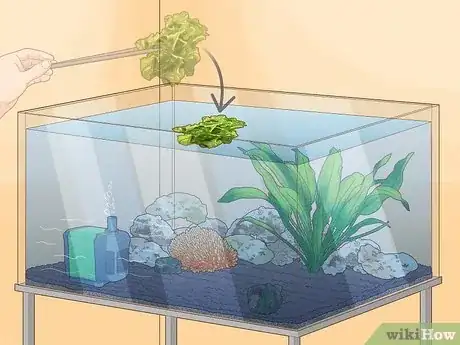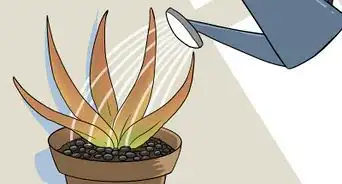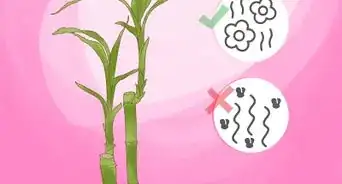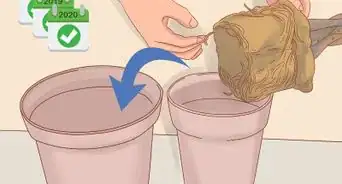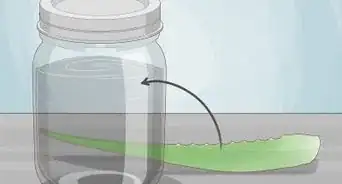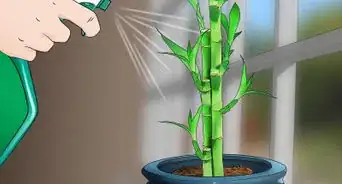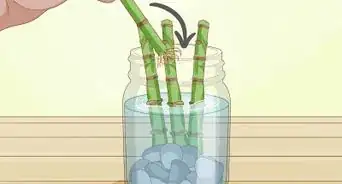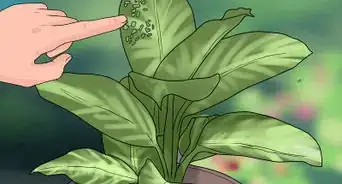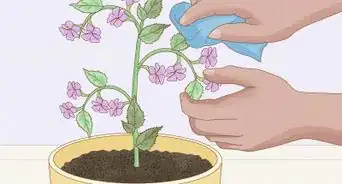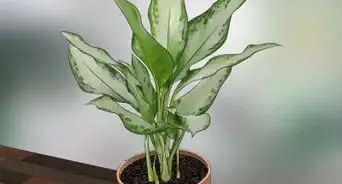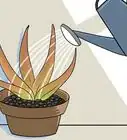X
This article was co-authored by Lauren Kurtz. Lauren Kurtz is a Naturalist and Horticultural Specialist. Lauren has worked for Aurora, Colorado managing the Water-Wise Garden at Aurora Municipal Center for the Water Conservation Department. She earned a BA in Environmental and Sustainability Studies from Western Michigan University in 2014.
This article has been viewed 16,198 times.
If you keep a hobby aquarium, you may be interested in adding ulva algae to your tank. Ulva algae helps filter the water and provides a food source for herbivorous fish. Ulva algae is rather easy to grow with the right water temperature, pH, and lighting.
Steps
Method 1
Method 1 of 2:
Helping the Algae Thrive
-
1Obtain a piece of ulva algae. To start growing ulva algae in your aquarium, you can go to a local pet store or order the algae from the internet. If you live near the coast, you may be able to find some ulva algae in the ocean and try growing it from that plant.[1]
- When you are looking for ulva algae to purchase, you may also want to look for sea lettuce, which the plant also goes by.
-
2Grow ulva algae in nutrient rich water. Ulva algae does best when it is in nutrient rich aquarium waters. If your aquarium’s nutrient levels are low, you can use iron supplements to help the ulva algae grow properly. Be careful when adding iron supplements to your aquarium so you don't accidentally add too much.Advertisement
-
3Place the algae in an area with high flow. You should place the ulva algae in an area of your aquarium where the water flow is highest. This algae helps to filter nitrates and phosphates out of the aquarium. Placing it in a high flow area will help filter the most out of the water.[2]
-
4Make the water the proper temperature. Ulva algae grows best in moderate water temperatures. It can survive in waters between 65 to 80 degrees Fahrenheit, or 18 to 26 degrees Celcius. However, it does best in water that ranges from 72 to 78 degrees Fahrenheit, or 22 to 25 degrees Celcius.
-
5Keep the water at the right pH level. Ulva algae needs a certain pH level. Your aquarium should be between 8.1 to 8.4. You can use chemical additives to change the pH level, or use natural agents that will adjust the pH.[3]
- Make sure to change the chemistry of the water slowly. Your fish may die if you change the pH more than 0.3 in 24 hours.
-
6Place the algae in moderate lighting. Ulva algae can do well in moderate to high lighting. It can even last for a few days in no light. The algae does best in lighting of three watts per gallon or more.[4]
-
7Prune the algae when it gets too big. Your ulva algae may start to get too big as it grows. This type of algae can get as large as 12 inches (30.5 cm). Pruning the algae can help keep the size under control. Just clip off part of the algae. You can feed it to your fish, give it to someone, or throw it away.[5]
Advertisement
Method 2
Method 2 of 2:
Choosing Placement Options in the Aquarium
-
1Put the algae in the sump compartment. Because of the algae needs water flow and floats, you can place it in the sump compartment of the aquarium filter system. Sump compartments are the secondary tanks that are connected to the display aquarium tank that helps filter the water.[6] This will allow the algae to absorb the nitrates and phosphates it needs for growth.[7]
-
2Move it to the main aquarium. After the algae has filtered the nitrates and phosphates, you can move the algae into the main part of the aquarium. You can prune part of the algae and place it in the tank for the fish to eat. Alternately, you can move the entire plant into the main aquarium part for the fish to eat on.[8]
-
3Drop the algae in the aquarium water. If you don’t want to place the ulva algae in the sump compartment, you can place it directly in your aquarium. You can drop it in the water, where it will float on top of the water.
-
4Anchor the algae to a surface. Algae is a free floating plant. However, you can attach it to a rock or shell in your aquarium. Use a touch of superglue to attach the algae to whatever surface you want in your tank. Alternately, you can try tying a string around part of the algae and the surface you want to anchor it to.[9]
Advertisement
References
- ↑ https://www.reefcleaners.org/growing-guides
- ↑ https://www.aquariumdomain.com/SpeciesProfiles/MarinePlants/UlvaLettuceAlgae.shtml
- ↑ http://www.liveaquaria.com/PIC/article.cfm?aid=61
- ↑ https://www.reefcleaners.org/growing-guides
- ↑ https://www.aquariumdomain.com/SpeciesProfiles/MarinePlants/UlvaLettuceAlgae.shtml
- ↑ http://www.reefaquarium.com/2012/some-sump-basics/
- ↑ https://www.aquariumdomain.com/SpeciesProfiles/MarinePlants/UlvaLettuceAlgae.shtml
- ↑ https://www.aquariumdomain.com/SpeciesProfiles/MarinePlants/UlvaLettuceAlgae.shtml
- ↑ https://www.reefcleaners.org/growing-guides
About This Article
Advertisement

